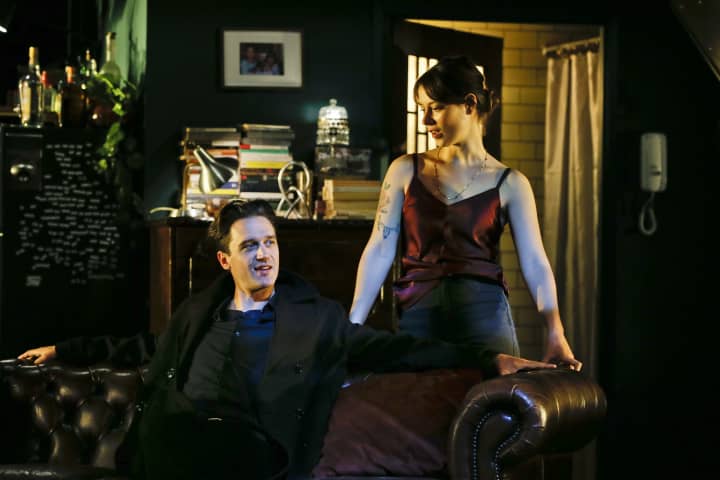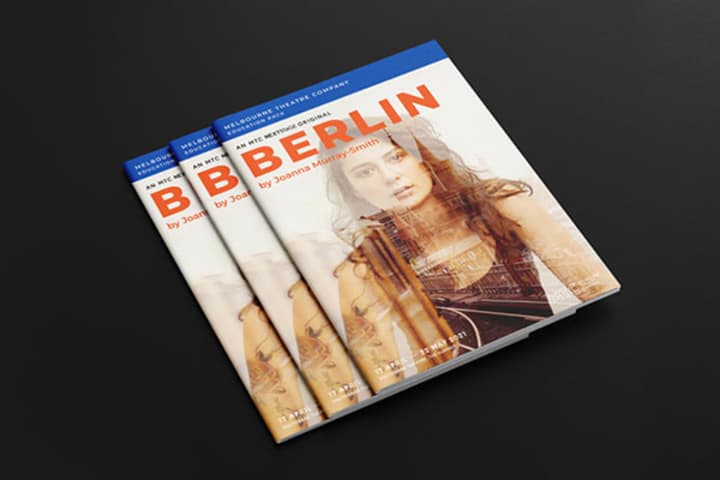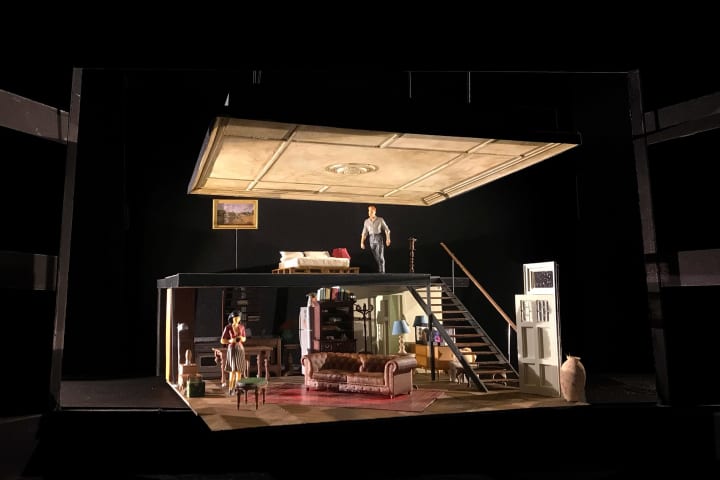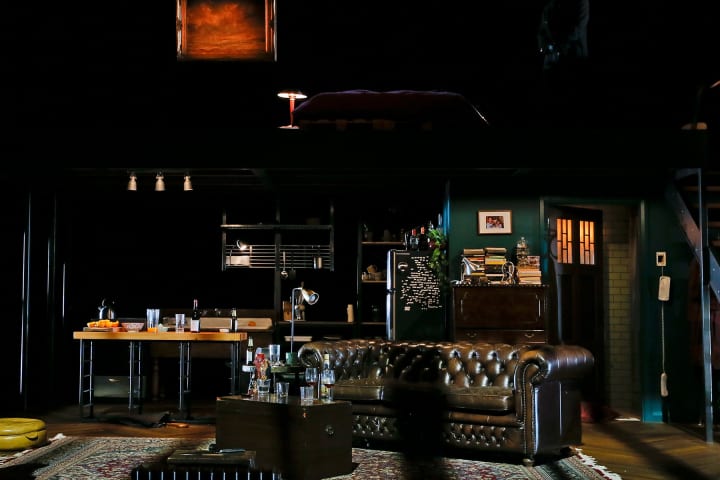Joanna Murray-Smith’s Berlin is a play immersed in history. As it is with the city itself, the World War II history of the German capital is deeply embedded within the play’s text. Beyond the widely known general history of the Holocaust and Nazism, however, the plays hinges on a very specific aspect of this past.
SPOILER ALERT: This feature reveals aspects of the performance that you may wish to experience for yourself first.
It’s been called the biggest art heist in history: leading up to and over the course of the War, the Third Reich plundered more half a million works of art from across Europe; in particular, art worth billions was deliberately looted from Jewish owners and collectors. Known as Raubkunst, much of this art was eventually recovered – frequently with the help of an organisation colloquially knowns as the Monuments Men – but it’s believed that at least 100,000 works remain at large. There are countless other works, in museums and private collections, the provenance (or record of ownership) of which is in doubt.
The story of the Monuments Men was dramatized by George Clooney. Above: a scene from the film
The Nazi acquisition of art was in part opportunistic, but it had its origins in Hitler’s quest for racial and cultural ‘purity’. The Führer liked art – as a young man he had wanted to be an artist – though he had very particular tastes: landscapes and depictions of idealised Aryan soldiers and nudes were considered acceptable and proper; abstract and expressionist art, meanwhile, was deemed ‘degenerate’ (Entartete Kunst) and banned. As a result of this love/hate relationship, vast numbers of paintings, prints and objets d’art were either confiscated or seized; among them, almost all German modernist art as well as paintings and works by Picasso, Klimt, Rembrandt, Van Gogh, da Vinci and Michelangelo. Many of the artists, as well as museum and gallery curators, collectors and art dealers, lost their livelihoods, or worse. Plenty went into exile. As they fled, any works not already expropriated were scooped up by Germans for substantial bargains, or just outright looted.
Hitler had grand plans to establish a museum in Linz, near his hometown of Braunau am Inn in what is now Austria. Plundered works that met with his approval were hidden in mines and Nazi households across Germany, awaiting the day the so-called Führermuseum would be built; some were displayed in the 1937 Great German Art Exhibition in Munich. Meanwhile, Joseph Goebbels’ Ministry of Propaganda staged ‘condemnation exhibitions’ (or Schandausstellungen) around the country with the seized works that were considered degenerate. These Schandausstellungen became the model for a different 1937 show in Munich known as The Degenerate Art Exhibition, which was designed to mock its works and prove that they displayed un-German properties: in opening the exhibit, the director of the Reich’s Chamber of Culture, Adolf Ziegler, said ‘look around you at these monstrosities of insanity, insolence, incompetence and degeneration’. Once The Degenerate Art Exhibition had served its purpose, its art works were either destroyed, or sold abroad to pay for the war.
SEEKING RESTITUTION
In the years following World War II, much of the looted art was either lost to the public, or lost its provenance as looted art. The Monuments, Fine Arts and Archives program – aka the Monuments Men – had been established during the final years of the war to protect cultural icons; after the Axis forces surrendered, the program initiated the monumental task of finding and recovering stolen works of art. These Monuments Men (and women) were primarily volunteers, from at least 13 different nations, comprising art historians, museum curators and others with specialist knowledge. They helped collectors including the famed Rothschilds reclaim thousands of works of art. Ironically, their work was aided by the detailed notes kept by the Ministry of Propaganda; these notes are still being used today to help establish provenance.
The restitution movement to find, identify and return stolen art works has gained momentum in recent years. In 1998, Austria established the Commission for Provenance Research and passed a national restitution law. The same year, the US Department of State and the Holocaust Memorial Museum hosted 44 governments at the Washington Conference on Holocaust-Era Assets, which established a set of principles designed ‘to assist in resolving issues related to Nazi-confiscated art’.
Since then, many galleries and museums, including the Louvre in Paris and New York’s Museum of Modern Art, have hired staff dedicated to examining their collections for contested works; and governments have established panels to investigate claims from heirs. In 2014, for example, London’s Tate Gallery returned a John Constable painting (Beaching a Boat, Brighton, 1824) to the family of its original owner after the UK’s Spoliation Advisory Panel established that it had been stolen in 1945. Four years later, another Constable (Dedham from Langham, 1813) was handed over to a claimant who had spent more than a decade pursuing his case with Switzerland’s Musée des Beaux-Arts, where the painting had ended up in 1986.
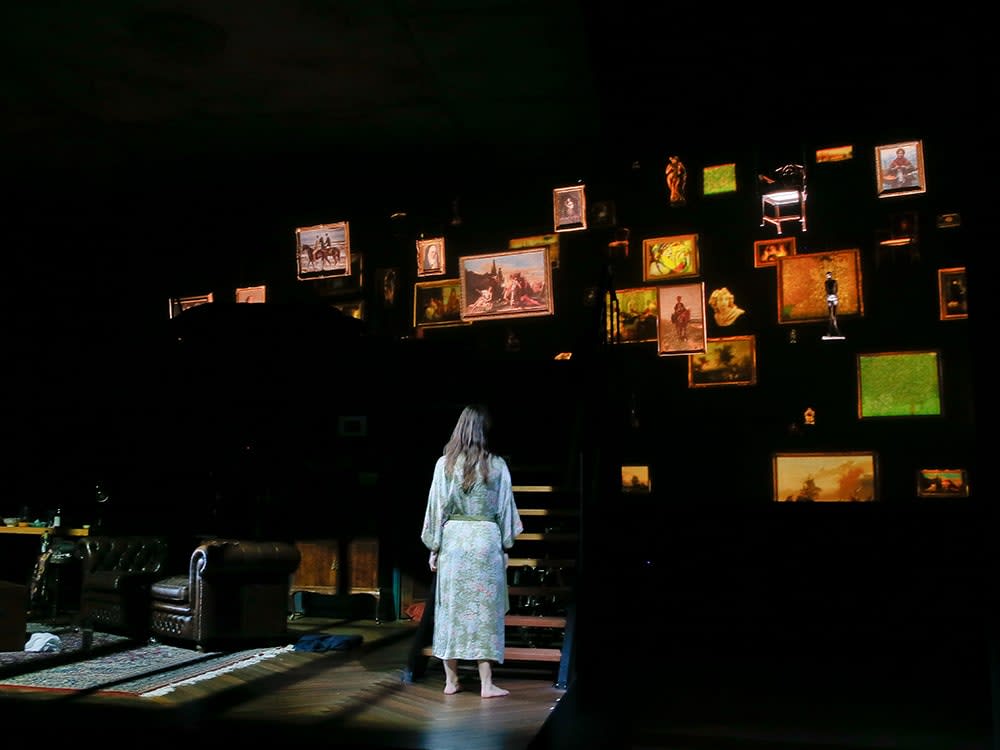
Grace Cummings on the set of Berlin. Photo: Jeff Busby
In Joanna Murray-Smith’s Berlin, the character of Charlotte, a German bar tender, owns a painting by John Constable that is ‘slightly incongruent with the look’ throughout the rest of her shabby-chic apartment. She tells Tom it’s a fake given to her by her mother to ‘cheer the place up’. But in the third act, it’s revealed that the Constable is authentic and originally belonged to Tom’s Jewish great grandfather, Julius. In the world of the play, Julius was strong-armed into relinquishing his art collection to the Nazis by a German dealer called Wolfgang Schmidt: Charlotte’s great grandfather. Most of the art thus “acquired” was destined for Hitler’s Führermuseum, Murray-Smith has Tom explain, but after ‘surveying the collection with a professional’s eye, Wolfgang Schmidt kept one for himself’. One that was eventually inherited by his granddaughter, who transferred it to her daughter, Charlotte, so it didn’t become part of her divorce settlement. Tom seeks restitution.
The play is inspired by history and actual events, but it is a fictional story. Tom and Charlotte are not based on real people, though their stories will have a ring of truth for many (perhaps most famously, Cornelius Gurlitt inherited thousands of Nazi-looted artworks from his father, but kept them hidden away in his apartment for decades). Charlotte’s Constable is similarly fictional and was created specifically for this production. It is highly evocative of the real John Constable’s work, even featuring details reproduced from some his paintings currently held by the Tate and the Cleveland Museum of Art.
Published on 13 April 2021

